Most Common JSON-LD Schema Issues and Solutions
If you've ever applied structured data to your site, you've probably encountered schema errors in Google Search Console. In this article, I wanted to bring together the most common schema errors and solutions that I have come across. You can contribute to your SEO visibility by fixing errors and warnings.
When integrated correctly and according to guidelines, structured data can be the most powerful tool you have in terms of SERP visibility. This can increase the site's organic traffic and click-through rates. Although you look at it in detail, adding schema to pages from time to time brings some pitfalls and many websites can get very different errors. We often see common schema problems, especially in e-commerce sites.
Your rule of thumb should always be to read Google's documentation and structured data guidelines in detail. Sometimes schema codes implemented in terms of content, even if technically not a problem, can be considered a violation of the guidelines and you may receive manual action notifications.
Errors and Warnings
In the Google Search Console, structured data issues are marked in red or yellow. It is important to ensure that items in red are resolved as a priority. Otherwise, schema codes will not be parsed correctly by search engines and therefore will not be suitable for rich results.
- Errors: There is a serious problem that needs to be fixed that may cause rich results not to be shown.
- Warnings: A recommended feature has yet to be used and indicates a non-significant problem.

One of the common reports in the Search Console is the "Unparsable structured data" report. This report indicates that there is a problem preventing Google from interpreting your data correctly.
Here are some of the most common schema errors and solutions:
Parsing error: Missing ',' or '}'
This particular error indicates a problem with parsing certain characters in your structured data. The vast majority of sites that receive a parsing error will have this error. Commas or square brackets are important parts of JSON-LD. Missing or misapplying one of them can invalidate your entire markup.

How to solve the parsing error?
As I mentioned, you need to check for commas or parentheses to resolve this error. Below you can see how you can get rid of the error by simply deleting a comma:
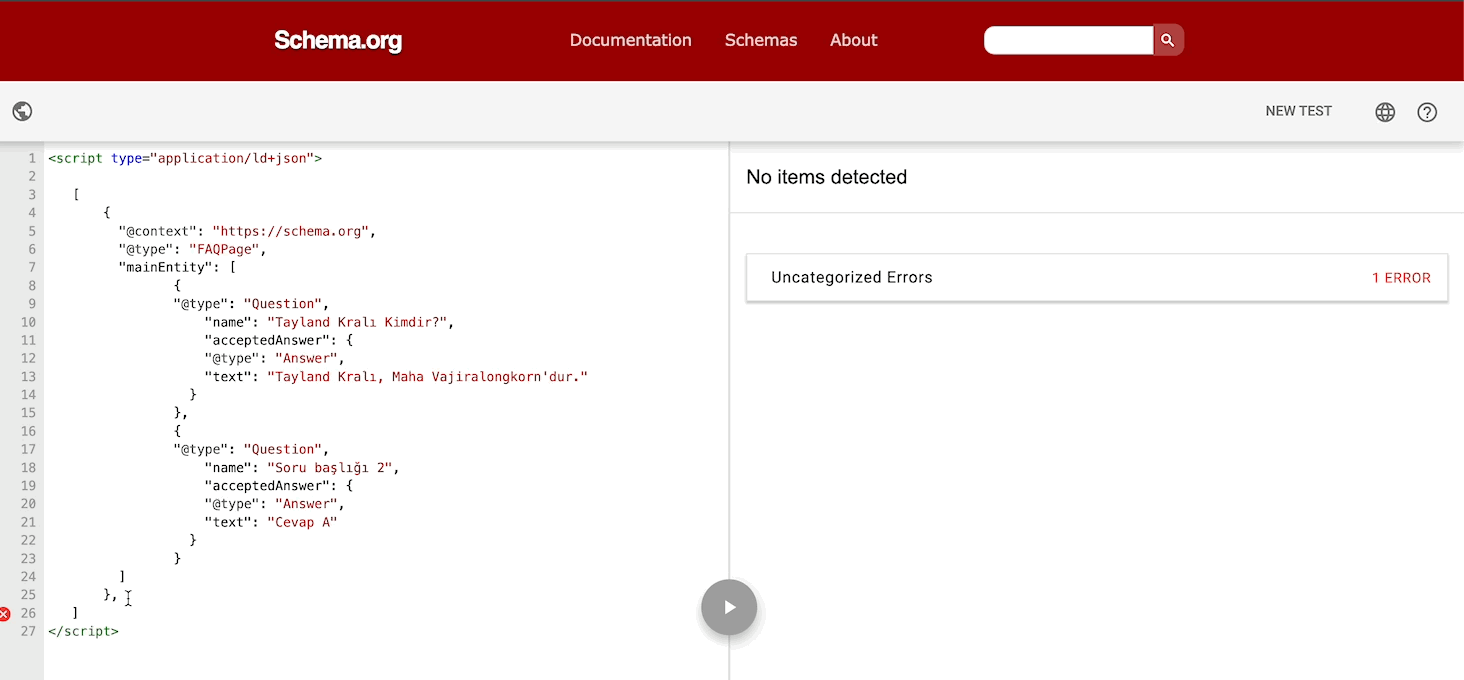
You can also solve the similar error "Missing ',' or ']' in array declaration" as follows. Here again, pay attention to the parentheses and delete the redundant ones:
![Missing ',' or ']' in array declaration](https://www.datocms-assets.com/18376/1709798811-jsonld-schema2.gif)
Parsing error: ")" or object member name is missing & (Parsing error: Missing '}' or object member name) error:
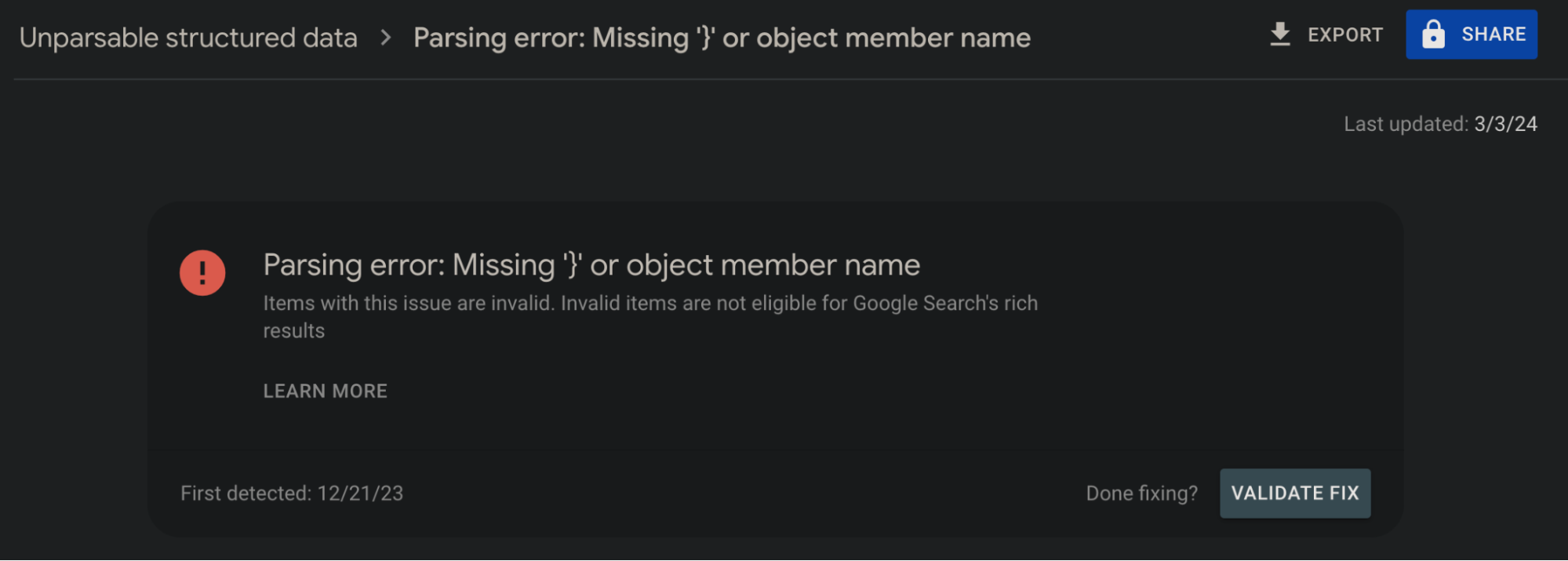
Go to the line with the error and delete the incorrectly added comma or parenthesis:
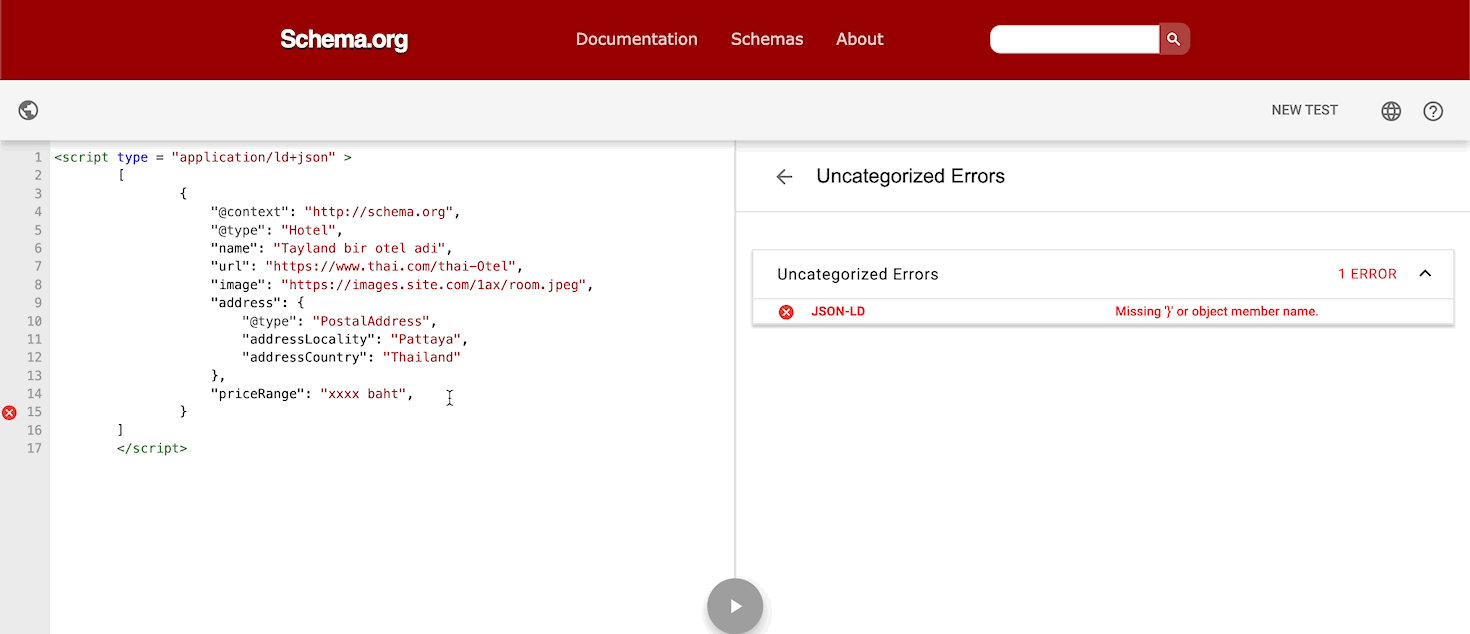
Bad escape sequence in string
You may get this error because the unwanted character is in the schema. In the following example you can see that this error is received because of the "\" character:
"title":"SEO Manager - Samet\Özsüleyman",
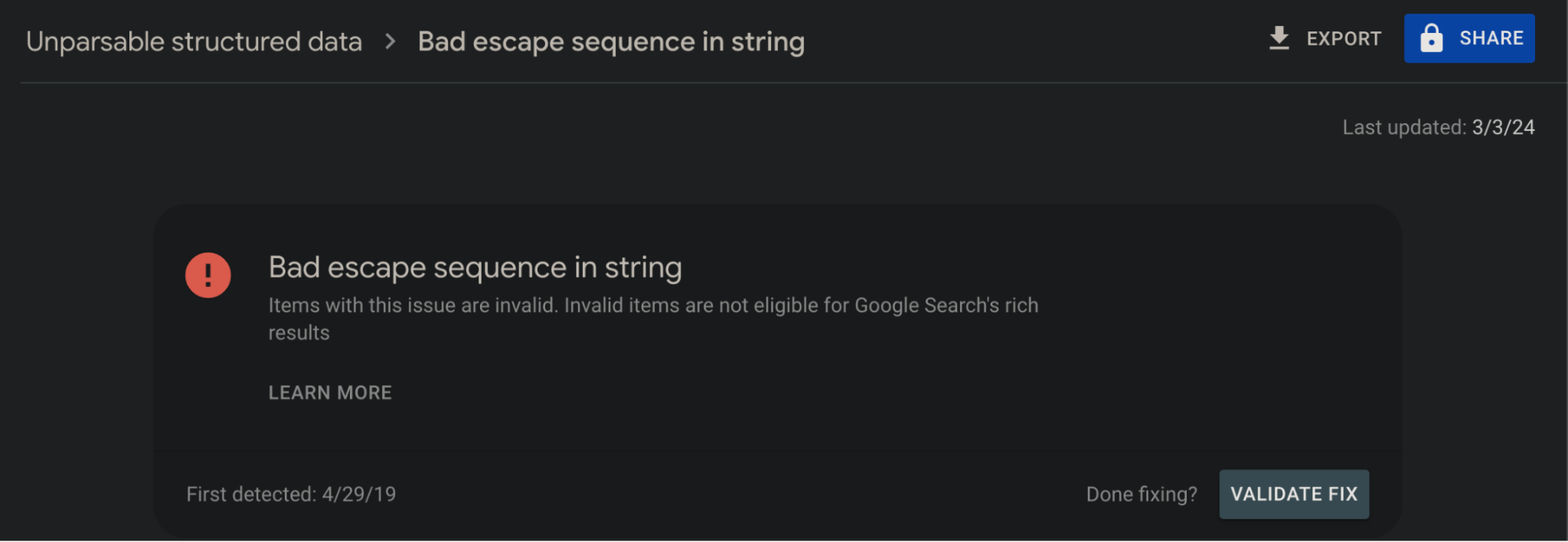
You may also get an error similar to the error type "String has an empty out-of-code sequence".
How to resolve a bad escape sequence in a string error?
To fix this error, replace the "\" character and edit the code. Then this error will be fixed:
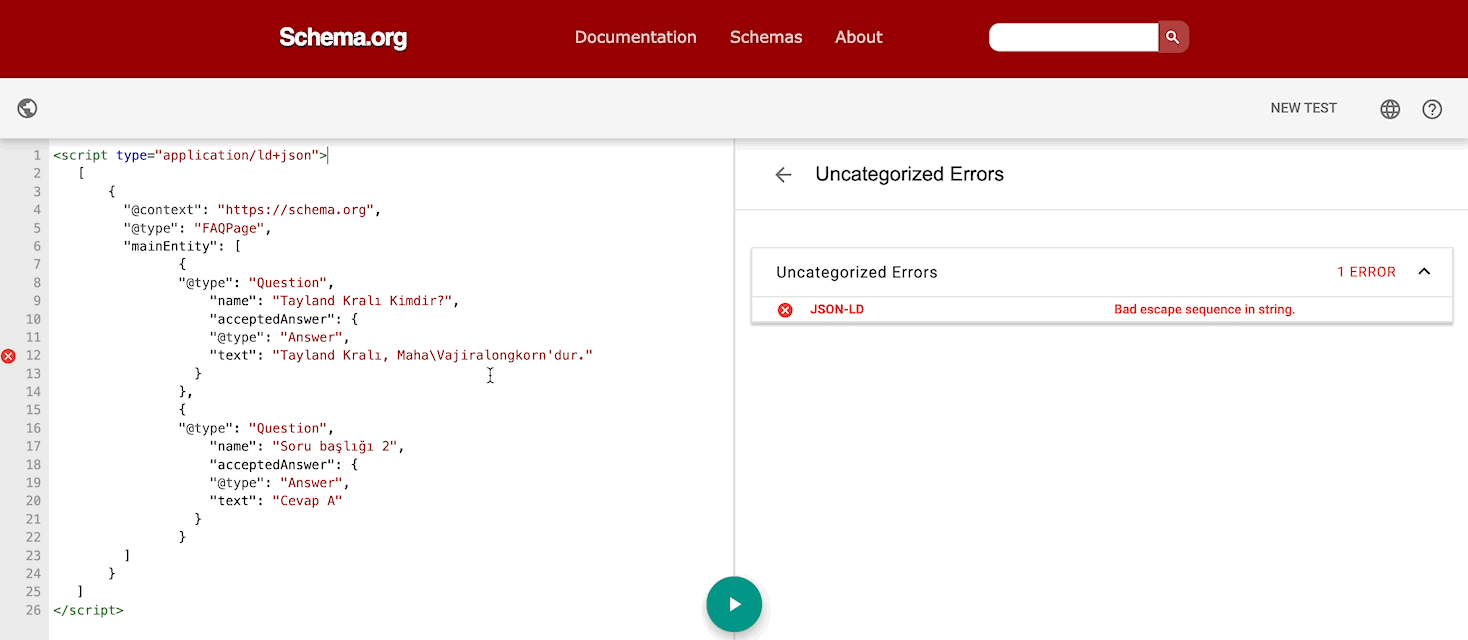
Incorrect value type
It means that the declared value is not a valid type for that property. So the code you added contains an incorrect value. In Schema code, each property has an expected value and each one must be matched correctly. You can check the expected values for all possible properties in Schema.org's documentation.

How to resolve the Incorrect value type error?
To solve the problem, for example, you should examine the sections in "articleBody": and remove any irrelevant values. JS codes can be found here, but many different scenarios can cause this error. You should not include them in JSON-LD:
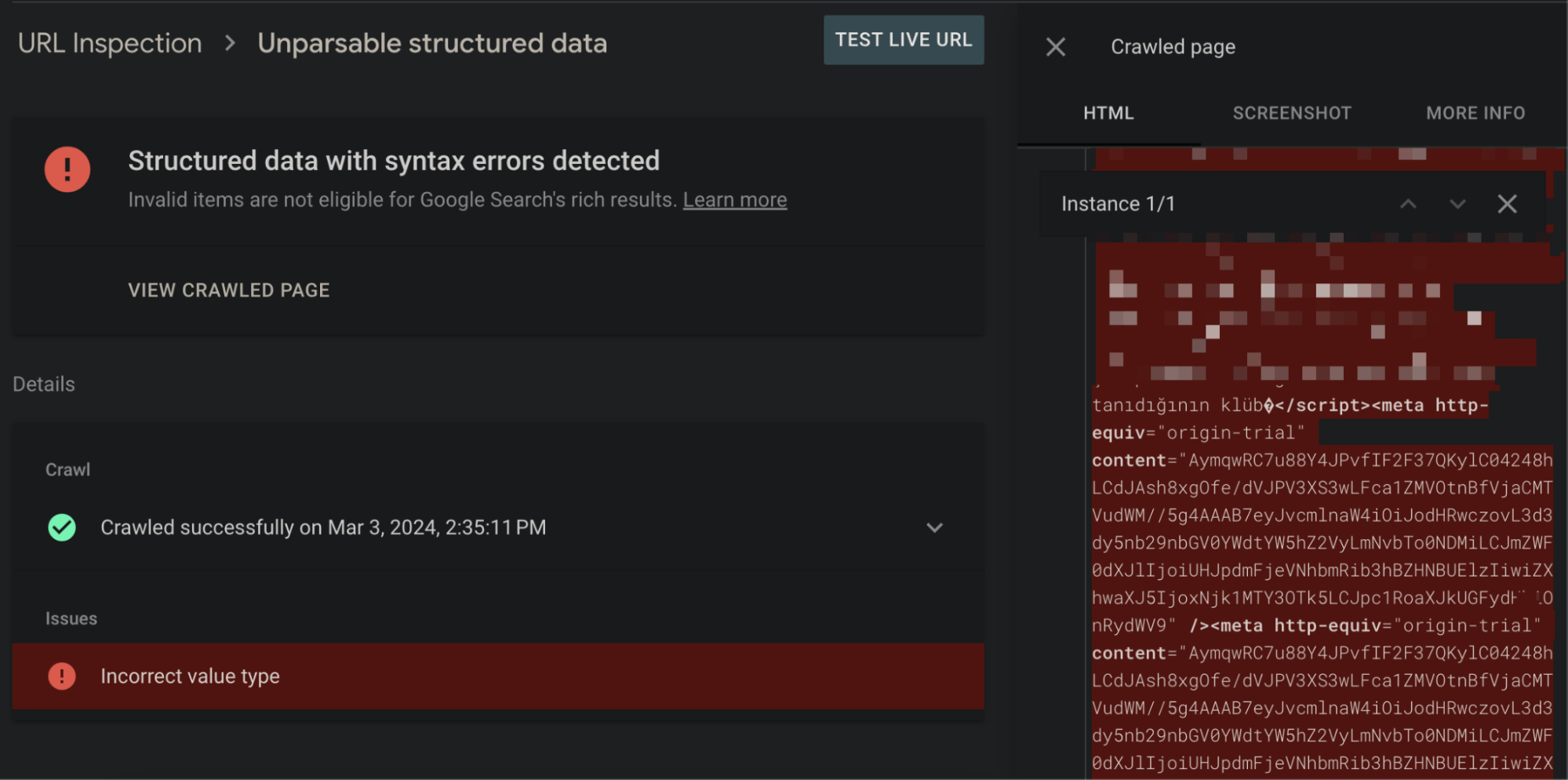
Invalid top level element "string"
In cases where schema types are used more than once, you can often see this error in cases that are sometimes overlooked:

You can get this error in many different types, but I wanted to show it in the image below. In the schema addition made with React, NewsArticle, and BreadcrumbList were wanted to be used together; but this schema type was invalidated due to the error in BreadcrumbList:
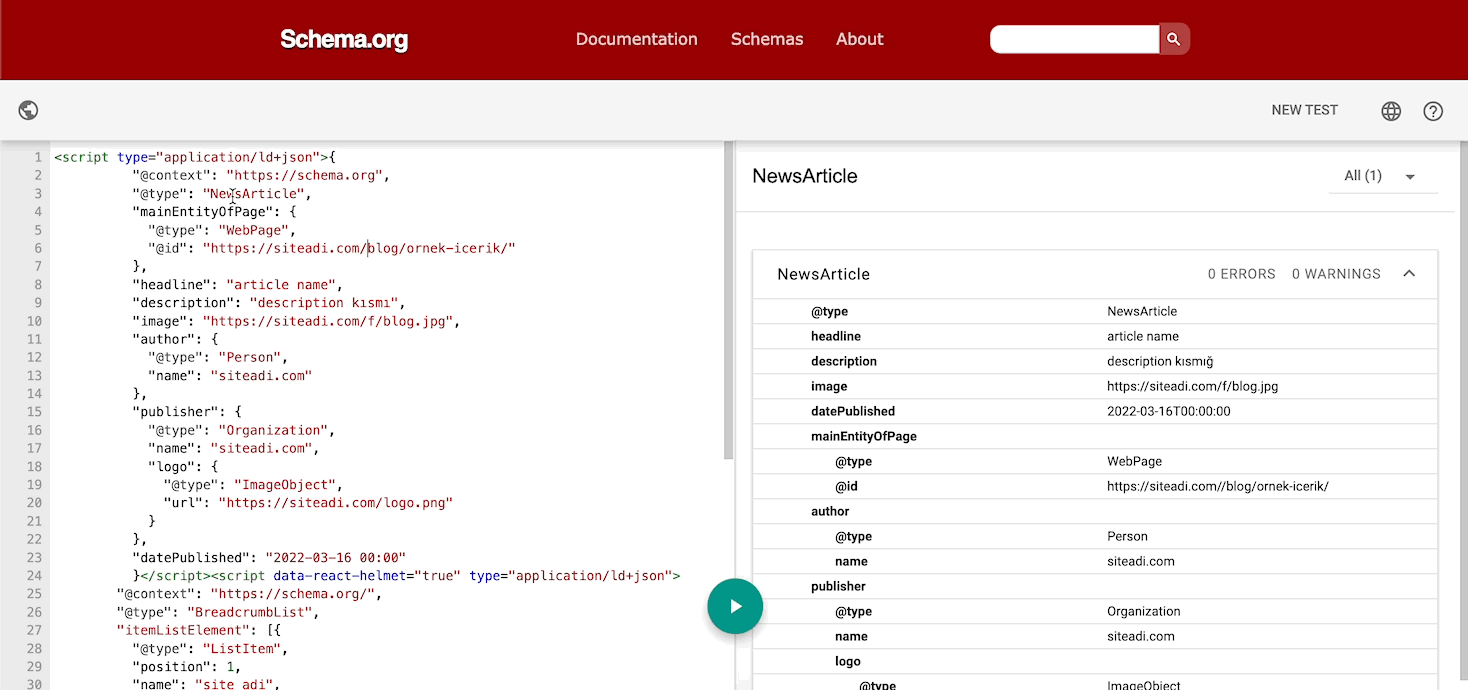
How to fix invalid top-level item errors?
As an action, you can fix this error after closing and testing the code section in the BreadcrumbList schema in this example correctly. You can also detect and fix errors such as invalid top-level element "null" in this context.
Other error types that are not included in the article but are very niche are as follows. Some of them can even be identified by the error name:
- Invalid JSON document
- Unable to parse token length
- Invalid number
- Truncated Unicode character
- Invalid Unicode character
- Invalid Unicode decoding sequence: Four digits expected
- Invalid Unicode decode sequence: Hexadecimal digit expected
- Unique recurring property
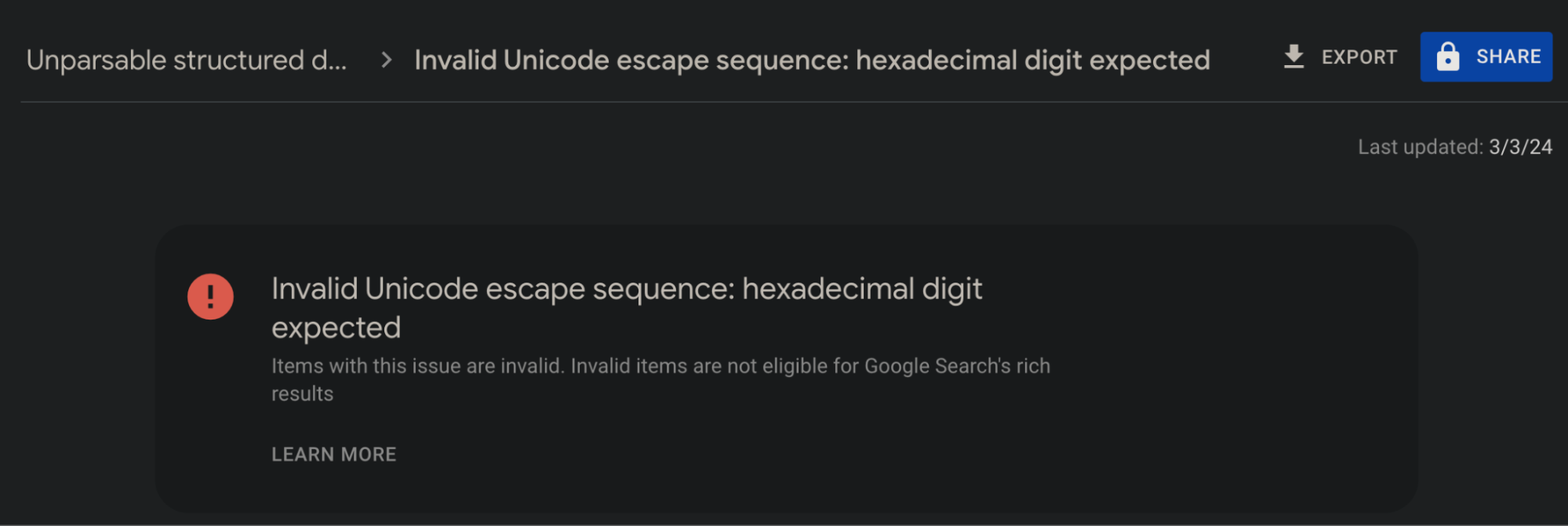
From time to time you may get an error "There was an error validating your markup" when validating code with schema.org. You can get this error when some characters in the code do not allow checking. Alternatively, you can switch to the rich results testing tool.

Once you have tested and confirmed that you have fixed all the bugs, you can report it to Google with the "validate fix" button. For a few bugs, I don't think it's necessary to fill sprints with a lot of work. You can always prioritize the types of bugs that affect many more pages:

Finally, if you have errors in non-JSON-LD code structures such as an invalid value in the "itemtype" field, you need to examine them in depth. Since my article is only about JSON-LD, I have included these. If you need a comprehensive schema audit or analysis, do not hesitate to contact us.
Useful resources:
















